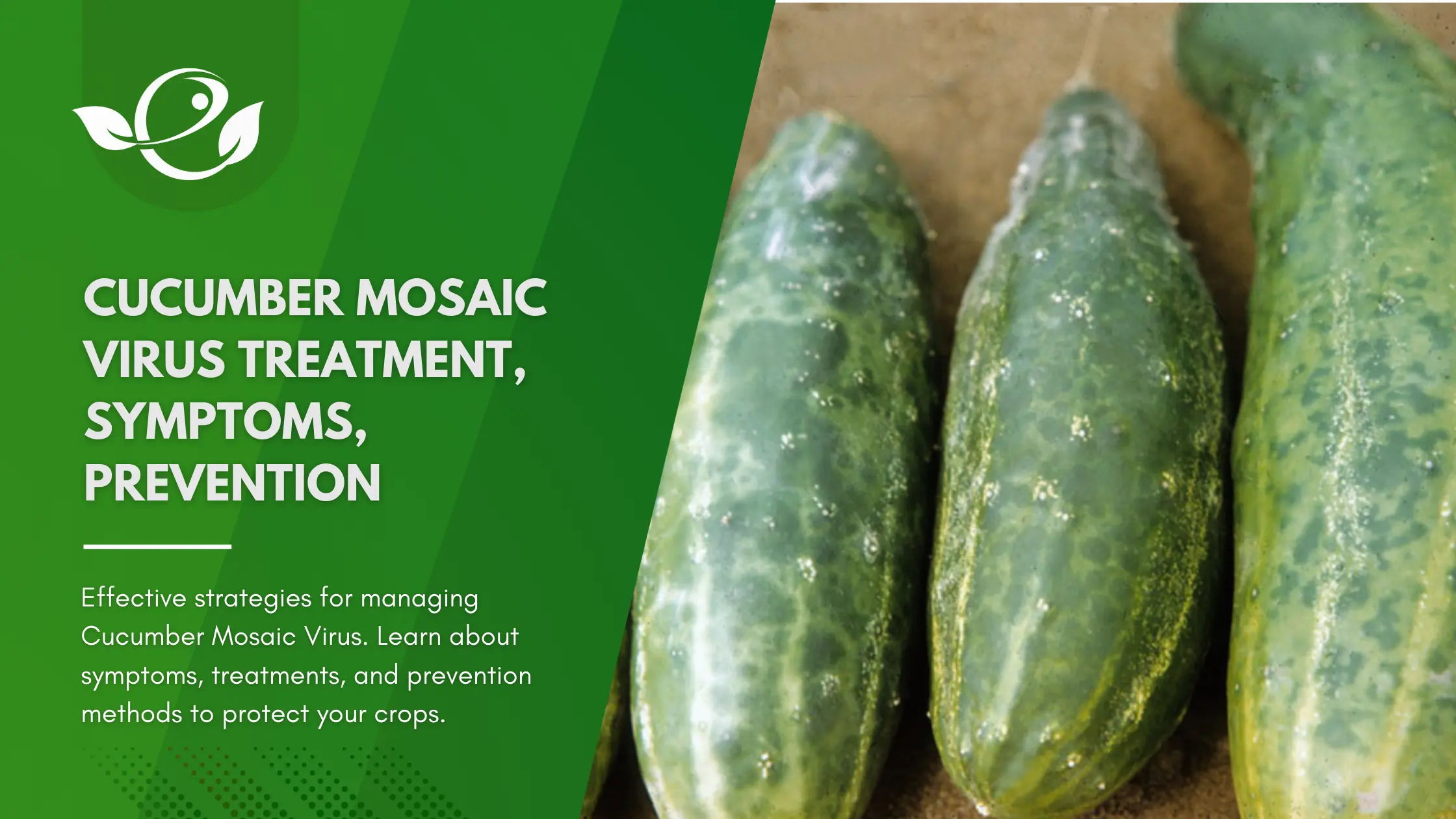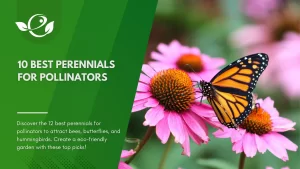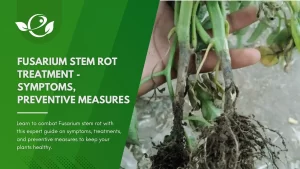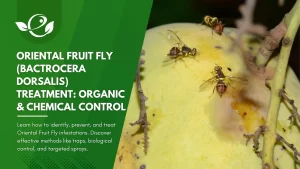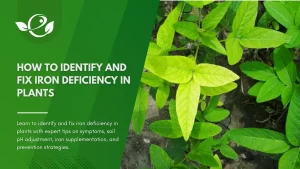Table of Contents
Picture this: you’re a proud gardener, watching your cucumber plants grow and flourish, dreaming of the delicious salads and pickles they’ll soon become. Then one day, you notice something odd—leaves that look like they’ve been on the losing side of a paintball fight, mottled with strange patterns and spots. Is it a new variety of cucumber disco fever? Sadly, no. Your plants have likely fallen victim to the infamous Cucumber Mosaic Virus (CMV), an unwelcome guest in gardens and farms worldwide.
But don’t despair! Much like a detective in a classic whodunit, we’re here to unravel the mystery of CMV. We’ll delve into the symptoms that give this virus away, the treatments that can help manage its presence, and, most importantly, the prevention strategies that can keep your garden safe from this leafy invader. So, grab your magnifying glass and your gardening gloves—we’re about to embark on a horticultural adventure.
Understanding Cucumber Mosaic Virus (CMV)
Definition and History
Cucumber Mosaic Virus, or CMV, is a viral pathogen that affects a wide range of plant species, causing significant agricultural damage. Discovered in the early 20th century, CMV is notorious for its ability to infect over 1,200 plant species, including many economically important crops such as cucumbers, melons, squashes, tomatoes, and peppers.
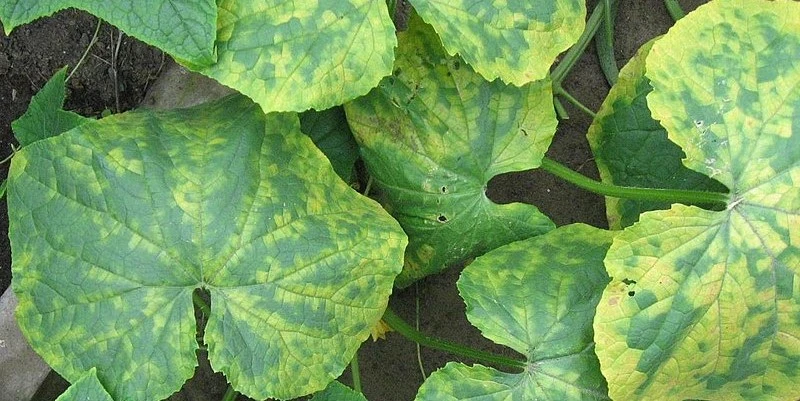
How CMV Spreads
- The primary culprits behind CMV’s rapid spread are aphids, tiny sap-sucking insects. These pests are not only a nuisance due to their feeding habits but also because they serve as vectors, carrying the virus from one plant to another. In a matter of seconds, an aphid can transfer CMV from an infected plant to a healthy one, making early detection and control of these insects crucial. The virus can be carried and transmitted by 60–80 different species of aphids.
- CMV can also spread through mechanical means. This occurs when infected sap comes into contact with healthy plants via contaminated tools, hands, or even clothing. Farmers and gardeners must practice good hygiene and sanitize tools regularly to prevent accidental transmission.
- As gardeners and farmers tend to their plants, they might inadvertently become agents of CMV transmission. Touching infected plants and then healthy ones without washing hands or disinfecting tools can easily spread the virus. Regular hand washing and tool sterilization are simple yet effective measures to combat this mode of transmission.
CMV Can also be found in
Bitter Gourd, Cucumber, Melon, Pumpkin, Tobacco, Tomato, Zucchini
Symptoms of Cucumber Mosaic Virus
Recognizing CMV early is key to managing its impact. The virus manifests in various ways, affecting the appearance and health of the infected plants.
- One of the most characteristic symptoms of CMV is the mosaic pattern that appears on the leaves. This pattern consists of light and dark green patches, giving the leaves a mottled appearance. It’s as if the leaves have taken up abstract painting, with irregular patches of discolored tissue spread across their surfaces.
- Infected leaves often become distorted, curling and wrinkling as the virus disrupts normal growth. Stunting is another common symptom, where affected plants exhibit reduced growth and vigor compared to their healthy counterparts.
- CMV can cause chlorosis, a condition where the leaves lose their green color and turn yellow. This yellowing is usually uneven, with patches of green and yellow appearing together, further contributing to the mosaic appearance.
- In some cases, CMV causes ring spots—circular areas of discolored tissue that appear on the leaves and fruits. These ring spots can vary in size and are often surrounded by healthy green tissue, making them stand out prominently.
- White streakes on flowers.
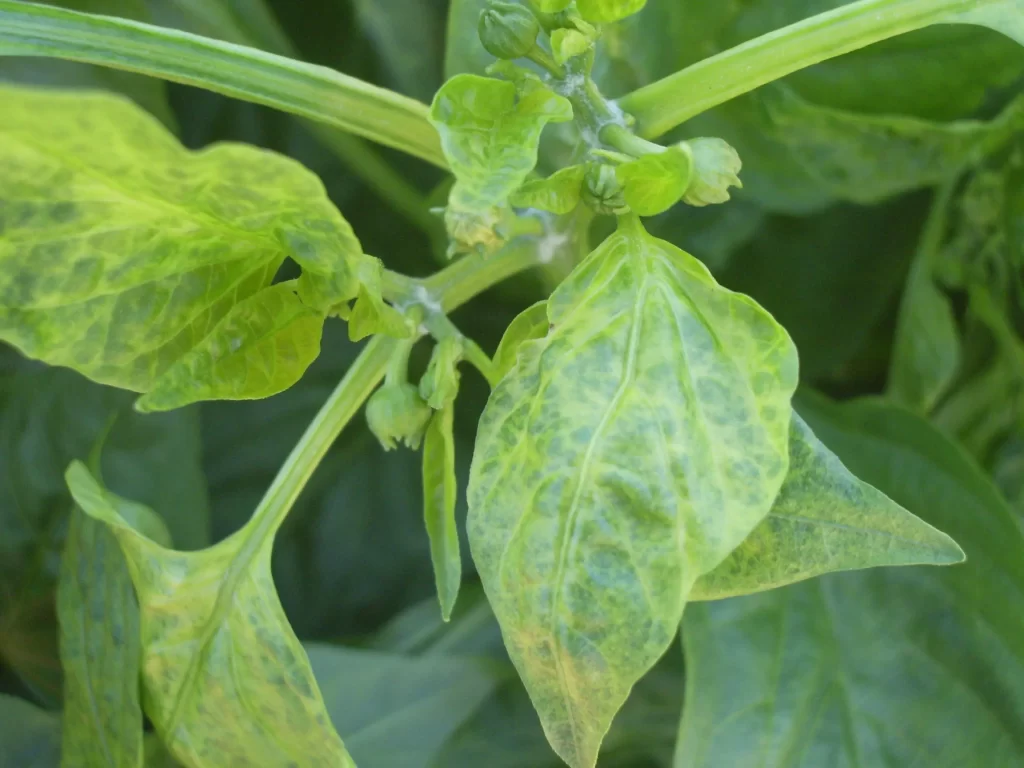
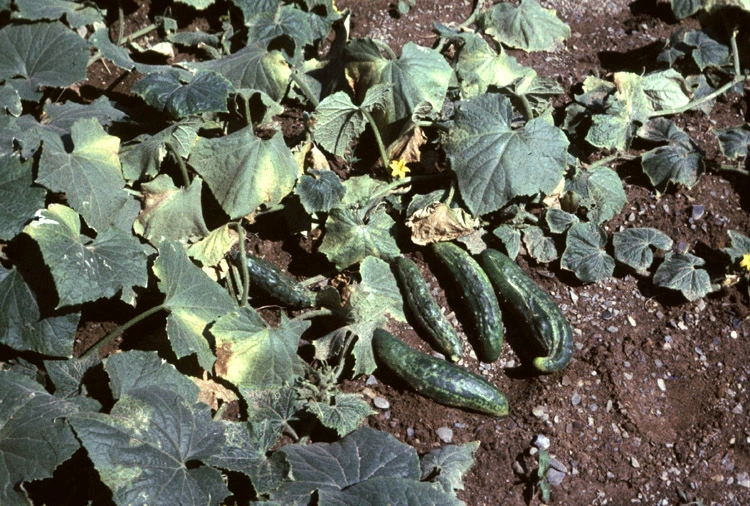
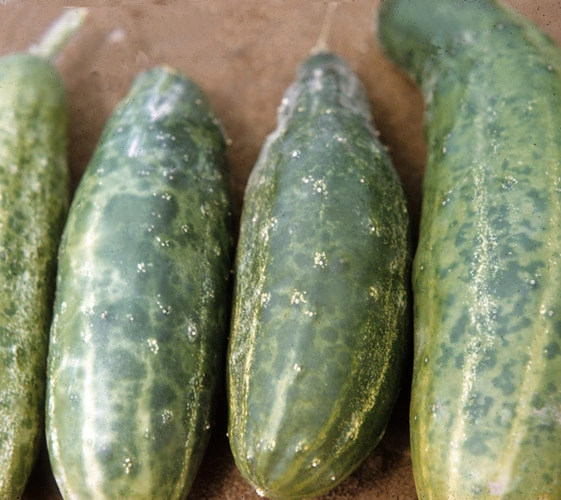
Symptoms vary depending on the plant species infected and the environmental conditions. In some cases, the virus may be present but the symptoms are hidden or masked. Yellowish patches or light green and yellow mottling can be seen on the leaves and fruits. Longitudinal growth of side branches and leaf stalks is increased, leading to the downward bending of leaves and petioles. Young leaves appear crinkled and narrow and the entire plant is severely stunted and malformed, with a bushy aspect. Flowers may display white streaks. Fruits develop upward-arching bulges that render them unmarketable.
Immediate Actions Upon Detection
Once CMV has been detected, managing its spread and minimizing its impact becomes a priority. While there is no cure for CMV, several treatment options can help control the virus and support the health of infected plants.
Isolation of Infected Plants
The first step in managing CMV is to isolate infected plants to prevent the virus from spreading to healthy ones. Removing these plants from the vicinity of healthy crops can significantly reduce the risk of further infection.
Removal and Destruction of Infected Plants
In severe cases, it may be necessary to remove and destroy infected plants entirely. This drastic measure can prevent the virus from persisting in the garden or field and spreading to other plants.
Chemical control of Cucumber mosaic virus
Always consider an integrated approach with preventive measures together with biological treatments if available. There are no effective chemicals against CMV, nor any that protect plants from becoming infected. Insecticides containing cypermethrin or chlorpyrifos can be used as foliar spray against aphids. Insecticides can help reduce aphid populations, but their effectiveness is limited. Aphids can quickly develop resistance to insecticides, and chemical treatments must be used judiciously to avoid harming beneficial insects and the environment.
While antiviral agents for plants are not as common as for humans, some research is being conducted to develop treatments that can directly inhibit viral replication. However, these treatments are still in experimental stages and not widely available.
Organic Control of Cucumber mosaic virus
Application of mineral oil sprays on leaves can deter aphids from feeding on them and can thereby control the population.
Prevention Strategies for CMV
- Use virus-free seeds and seedlings from certified source.
- Plant resistant or tolerant varieties (many available for spinach and cucurbits).
- Monitor fields and remove plants with signs of the disease.
- Remove any weeds that show the mosaic pattern.
- Remove other alternative hosts, growing near your crops.
- Ensure disinfection of tools or equipment used for vegetative propagation.
- Attach a floating cover to exclude migrant aphids during the early weeks of crop growth.
- Remove the cover after this period of greatest vulnerability has passed to ensure pollination.
- Plant barrier crops that will attract aphids.
- Use sticky traps to mass-catch the aphids.
- Cover the ground with an aphid deterrent material like aluminum foil.
- Applying mulch around plants can create a physical barrier that hinders aphid movement. Reflective mulches, in particular, can confuse and repel aphids, reducing their ability to spread CMV.
Conclusion
Cucumber Mosaic Virus may be a formidable foe, but with the right knowledge and strategies, it can be managed effectively. By understanding the symptoms, employing appropriate treatments, and implementing robust prevention strategies, gardeners and farmers can protect their crops and enjoy bountiful harvests. Remember, the key to success lies in vigilance, early intervention, and a comprehensive approach to plant health management.
By staying informed and proactive, we can protect our gardens and crops from the detrimental effects of CMV. Emphasizing early detection, rigorous sanitation practices, and the adoption of sustainable management methods will ensure healthier plants and more robust yields. In conclusion, tackling CMV requires a comprehensive and well-coordinated approach, combining scientific knowledge with practical strategies to safeguard our agricultural investments.
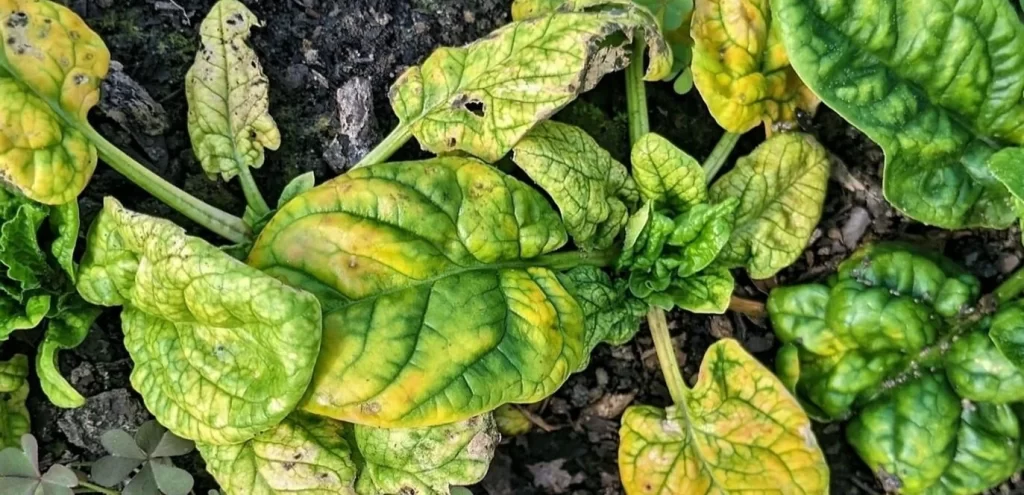
FAQs
Can CMV Affect Humans?
No, CMV does not affect humans. It is a plant virus and poses no threat to human health.
What Are the Best CMV-Resistant Plant Varieties?
Several seed companies offer CMV-resistant varieties for various crops. Consult your local nursery or seed supplier for recommendations suited to your region.
How Often Should I Check My Plants for Symptoms?
Regularly inspecting your plants—ideally once a week—can help catch early signs of CMV and other issues. Prompt action is key to effective management.
Can Cucumber Mosaic Virus spread to other plant species?
Yes, CMV can infect over 1,200 plant species, including many economically important crops like cucumbers, melons, squashes, tomatoes, and peppers. It is essential to isolate and manage infected plants promptly to prevent the virus from spreading to other susceptible species.
Are there any natural remedies for CMV?
While there are no natural cures for CMV, certain practices can help manage its spread. Introducing natural predators of aphids (such as ladybugs and lacewings), using beneficial microorganisms (like mycorrhizal fungi), and maintaining good garden hygiene can all contribute to reducing CMV impact.
Can CMV be completely eradicated from my garden?
Completely eradicating CMV from your garden can be challenging, especially since the virus can spread through multiple vectors and mechanical means. However, by implementing robust prevention and management strategies, you can significantly reduce its presence and impact.
What should I do if I suspect CMV in my plants?
If you suspect CMV in your plants, isolate the affected plants immediately to prevent the virus from spreading. Remove and destroy severely infected plants, sanitize your tools, and monitor your other plants closely for symptoms. Consider implementing integrated pest management (IPM) strategies to control insect vectors and prevent further infection.
How often should I sanitize my gardening tools?
Regularly sanitizing your gardening tools, ideally after each use or at least once a week, can help prevent the mechanical transmission of CMV and other plant pathogens. Use a solution of 10% bleach or 70% alcohol to disinfect your tools effectively.
Is CMV more common in certain regions?
CMV is a global issue, but its prevalence can vary by region. Areas with warm, humid climates and high aphid populations are more likely to experience CMV outbreaks. Consult your local agricultural extension services for region-specific advice and management strategies.
